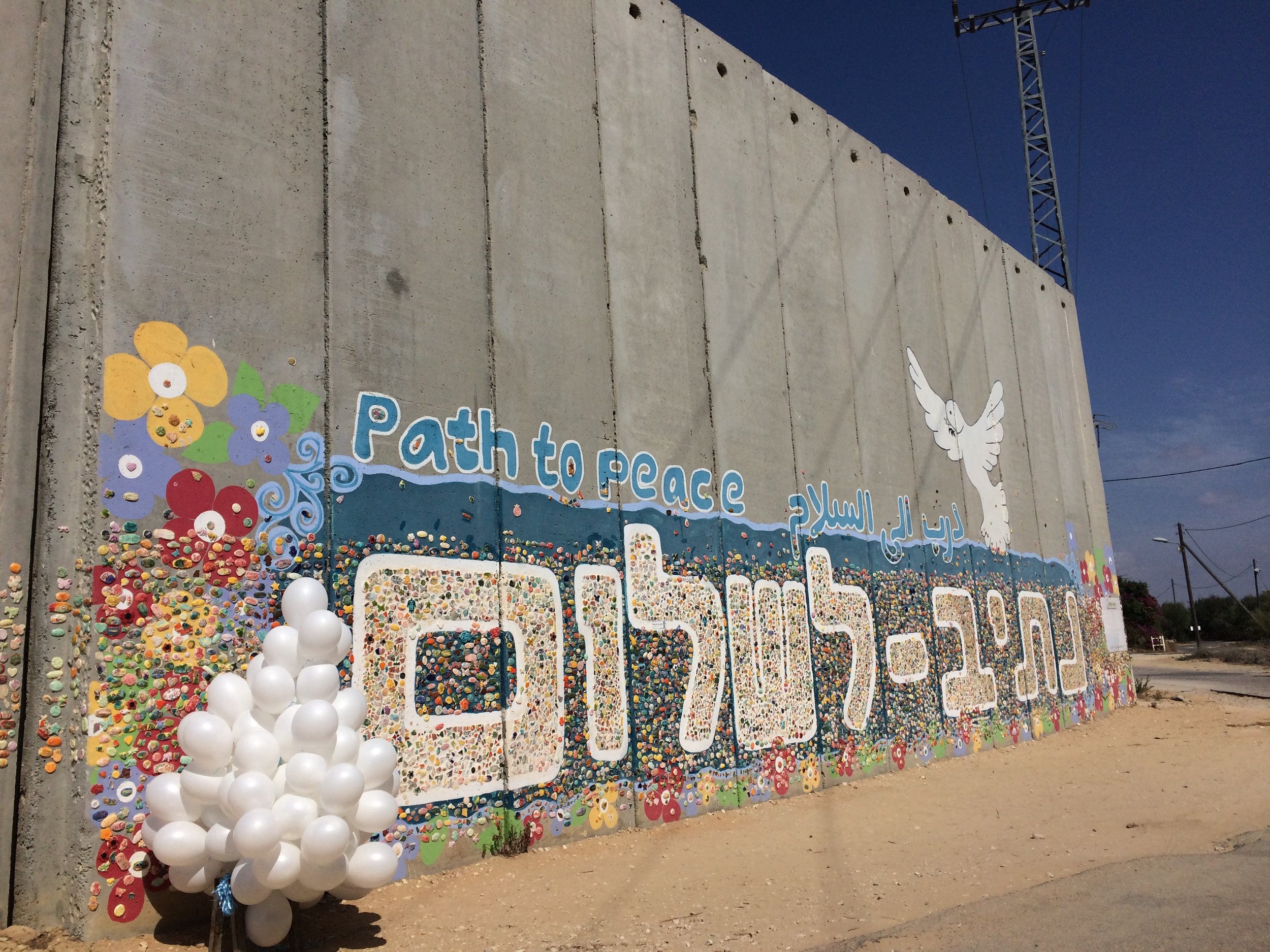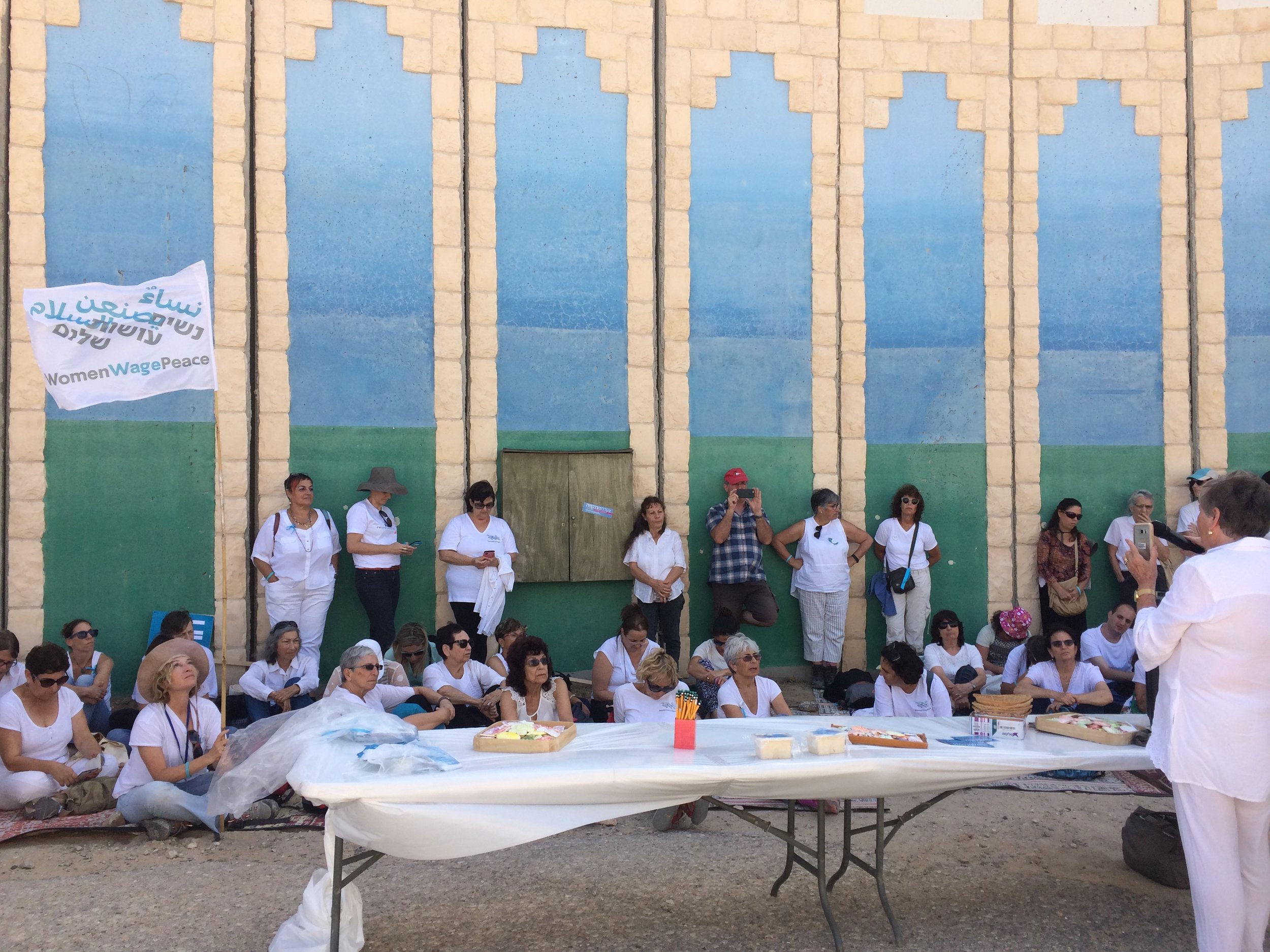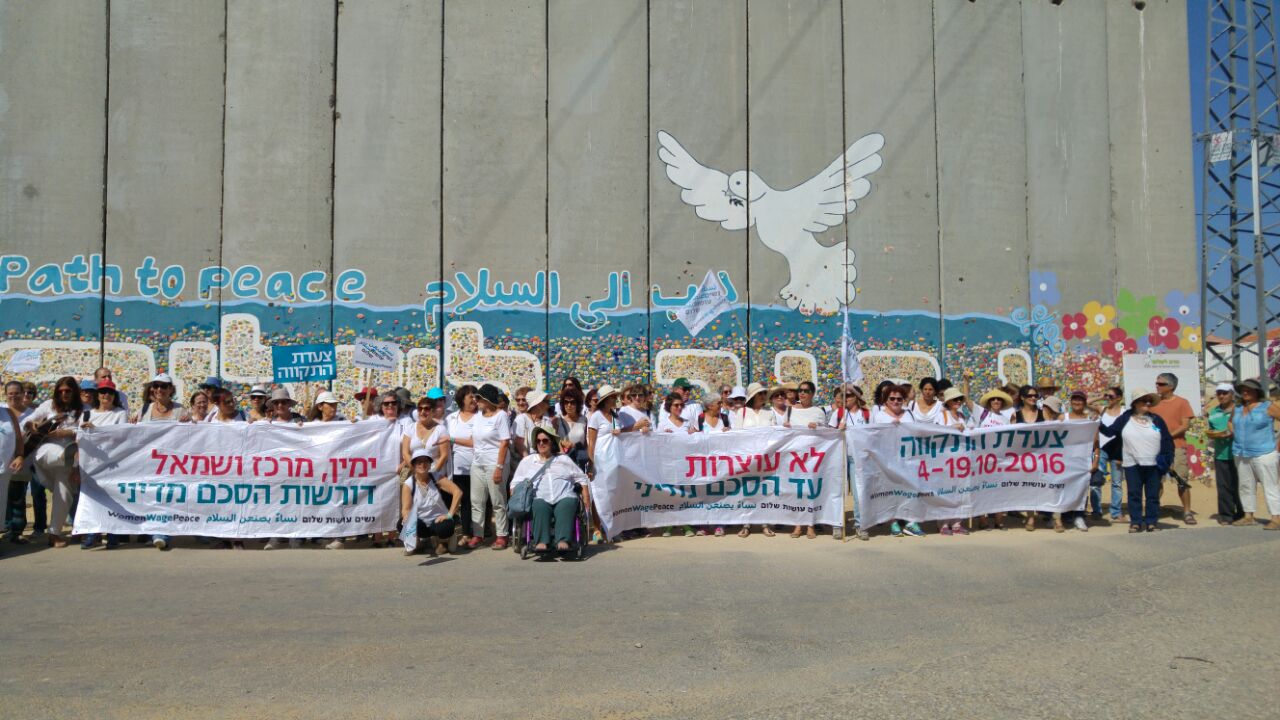4,000 Israeli and Palestinian women march at Qasr El-Yahud. 19 Oct 2016
It was 32° C (90°F), sweat dripped between my shoulder blades while I stood still. But the warmth I felt was not coming from the desert heat, rather from the company I was in. I was surrounded by thousands of women wearing white who were clapping their hands in unison and leaning forward to hear every word the speakers were saying. Hope rose in waves around us.
Women Wage Peace—the Israeli women’s peace movement that I researched for my masters degree—organized a massive event where for the last two weeks, women have been marching 250km from Rosh HaNikra, the northernmost point of the country next to the border with Lebanon, to Jerusalem. Along the way, they have stopped and met with different communities, and organized events and solidarity marches across the country. All along the way, people met the women and joined them. It culminated on Wednesday with thousands and thousands of people wearing white snaking their way through the streets of Jerusalem from the Supreme Court to the Prime Minister’s house. The organizers claim that it was a crowd of 20,000 people.
The march was a year in the making. I remember sitting at a group discussion at a Kibbutz in the Negev last April the first time I heard the idea mentioned. Shoulders were shrugged: “Holding a march is a huge project”, some said. “During Sukot? By the Dead Sea? It will be too hot!” others said. “With Palestinian women? It’ll never happen.” Yet that didn’t deter the organizers and a year later a complex, multi-faceted event was taking place.
Women Wage Peace (WWP) is an organization that was founded two years ago after the most recent war in Gaza. Women from around Israel began organizing around the belief that the cycle of violence must end. They officially emerged with their action the “Peace Train” in November 2014 where women rode the train from the North to the Southern city of Sderot to show solidarity with communities that had endured the heaviest attacks from Hamas’ rockets that summer. They organized a march to the Knesset in March 2015 to counter rhetoric of violence and demand a political solution. They organized 120 women to be standing with 120 placards addressing the 120 member of the Israeli Parliament on their first day in session. Their largest event to date, before the march, was their fifty-day fast in front of the Prime Minister’s house in Jerusalem corresponding to the one-year anniversary of Operation Protective Edge in Gaza.
The organizers of the movement claim that women’s voices have worth and have been neglected in Israeli discussions of security up until now and that they must be included in the conversation regarding political resolutions. The group appeals to Israeli mainstream society by connecting women to each other based on the notion of communal female experiences overcoming political divides and emphasize the power of women to transform a dead-locked conflict into one that can be resolved. They emphasize again and again the need to reach all factions of Israeli society and underlie the belief that everyone wants the same thing: peace.
However, they do not provide any details of what “Peace” is, they do not engage in divisive terms, they do not say the word “Occupation.” I originally held many reservations about this movement: in the context of political life here, organizations appear and disappear on the scene of conflict-resolution incredibly quickly. Personally, I had issues connecting with their a-politicism and vague promises, as I felt (and still feel) that everything here is political and it is best to name the evils we face in order to face them. And yet, in two years, they have amassed over 10,000 members from around the country. They have done the unimaginable: they have begun to reintroduce the concept of peace to Israeli society.
This is a larger project then what may appear at first glance. Israeli society has increasingly become disenchanted, disengaged, and disinterested with anything having to do with “peace” since the collapse of the Oslo Accords and the Second Intifada in the early 2000s. For an in-depth reading and explanation, see Tamar Hermann’s book The Israeli Peace Movement: A Shattered Dream. Since then, a general malaise and penchant for maintaining the status quo has colored most political conversation. Security is the word of the day here, compared to the Palestinian realities that focuses on the Occupation (West Bank), or Blockade (Gaza). Violence is justified by claims to security needs for the Jewish Israeli populace within and without the official borders. Peace has turned into a dirty word within Israeli camps, and equally so in Palestinian camps. The peace of the Camp David Accords and the famed handshake on the White House lawn seemingly accomplished nothing for either side.
Yet here is an organization, a movement, rallying around cries for Peace. Yet here we were, the morning of October 19th, 4,000 Israeli and Palestinian women walking 800m next to the Jordan River and the spot where Jesus supposedly was baptized. Yet here we were, 20,000 people walking the streets of Jerusalem that evening and the crowd was singing old peace songs from the days of past.
Peace was the word of the day, hope was the word of the movement, and women were the ones leading it.
***
Women Wage Peace had been busy since that meeting when the march was brought up over a year ago. The group began fundraising, organizing, and strategizing. They continued their “parlor-meetings” where women shared their experiences with war and discussed and debated what peace means to them. They continued creating spaces that encouraged women to be confident in their expertise, their voice, and their opinions. They unleashed a project called the “Israeli Salad” which was led by local community organizer Ya’aloma Zechut in the small periphery town of Ofakim, which focused on brining diverse voices from all sectors of Israeli society to the conversation. They became involved with an Israeli organization of lawyers called Itaah-Maaki (With You), which has been tasked with implementing a national action plan to implement the UN Resolution 1325 that focuses on the role of women in conflicts and in peace-building initiatives. WWP has been highlighted as the grassroots organization in touch with Israeli women and best able to undertake the project. They have also been hosting film-screenings across the country of the film Pray the Devil Back to Hell about the success of Liberian women’s peace movement that pressured their political leaders into ending their civil war.
All of this work culminated in the two-week event which WWP dubbed the “March of Hope.” Beginning at Rosh Hanikra, a group of women began hiking the 250km to Jerusalem. The kick-off event included a moment when another Israeli women’s movement called the Four Mothers (Arba Emahot: known for increasing public awareness and pressure to evacuate Israeli forces from occupying South Lebanon in the late 1990s) passed off the literal torch to this new movement. Interestingly it also coincided with the women’s flotilla attempt to break the maritime blockade of Gaza (interesting piece comparing the women’s activism of the two groups here).
Every day, while the women hiked from the North to the South, brandishing banners that read “We will not stop until [reaching] a political solution,” they sang a song written specifically for them and this week. Called “Prayer of the Mothers” and written by Israeli and Palestinian women: Yael Deckelbaum, Lubna Salame, and Miriam Tukan.
Meanwhile, events were held around the country daily.
The day before the main event, there had been solidarity marches across the country. I joined the march in Ashkelon that began with a gathering at the southernmost Israeli community that shares a border with Gaza called Netiv Haasara. As we stood there, we could see buildings in the Gazan city Beit Hanoun and yet again I was struck by how close everything is. We stood there at the wall that obstructed the two communities and provided the neighborhood a sense of security but also stood as a reminder of the trauma that the last three operations in Gaza had caused. We met at the wall because a member of the community has transformed the space into a collaborative art project where visitors are invited to add ceramic pieces to the mosaic that she calls “A Path to Peace.”
Another woman from the community who is a part of the organization Kol Aher (Other Voice) spoke and then picked up the phone to call a friend of hers in Gaza. By holding the microphone to the speaker of the phone, we heard Maha’s voice as she shared with the crowd the realities of life in Gaza: the inconsistency of electricity, their fears, how it feels to be locked in a prison. As her voice cracked with desperation, barely pausing between sentences to breathe, Vivian Silver (an organizer with WWP) stood up from the crowd impromptu and grabbed the phone and spoke up.
“Maha, we are all here to tell you that there is hope. Thousands of women from around the country are now marching. It’s in all of our interests, Palestinians, Israelis, Israelis from all sides of the political spectrum, we all have one interest. That is to live in security with hope for the future for us for our children and for our grandchildren, and we send you a big hug from all of us here and say to you that we want an end to the conflict and we are pressuring our governments to reach a diplomatic agreement.”
***
The next day we stumbled bleary eyed at 7am to the bus to head to the Dead Sea. The energy and the joy was contagious as we made our way through the south and picked up more and more women. We snaked through the highways, made our way to an old kibbutz founded in 1939, and were flagged down by ladies in white standing at junctions waiting to board. The bus filled up. We heard news that over 20 others buses were making their way to the meeting point at Qasr el-Yahud and that another 60 buses were expected to meet us in Jerusalem. Women from Eilat, Ashkelon, Ofakim, Afula, Beyt Shean, Kfar Saba, Umm al-Fahm, Tel Aviv, from the entire country were gathering. When we arrived at Qasr El-Yahud, there were buses as far as the eye could see. Women wearing white were disembarking to join the ever-growing crowd and were welcomed in Arabic, Hebrew, and English.
“From Jenin! From Nablus! From Ramallah! From Eilat! From Tel Aviv! From Haifa! From Qalqilya!” shouted the organizers. "Welcome!"
The choice of location was important: it is a pilgrimage site that is holy to the three monotheistic religions, but it is also located in Area C which means that both Palestinians from the West Bank and Israelis are permitted to be there. It is one of the rare spaces where a meeting like this can take place.
The energy was palpable, and then Leymeh Gbowee mounted the stage. Gbowee is the Nobel Peace Prize Laureate and leader of the women’s peace movement in Liberia. She riled up the crowd and started with a chant: "When I say women, you say peace! When I say peace you say: Yes! When I say war, you say: No!"
And we were off, marching down to the banks of the Jordan River. The scene was magical—thousands of women wearing white walking in the desert as far as the eye could see. Women wearing hijabs, women wearing high heels. Women carrying kids, older women carrying canes and portable chairs to sit on. Young women, teenagers snapping selfies.
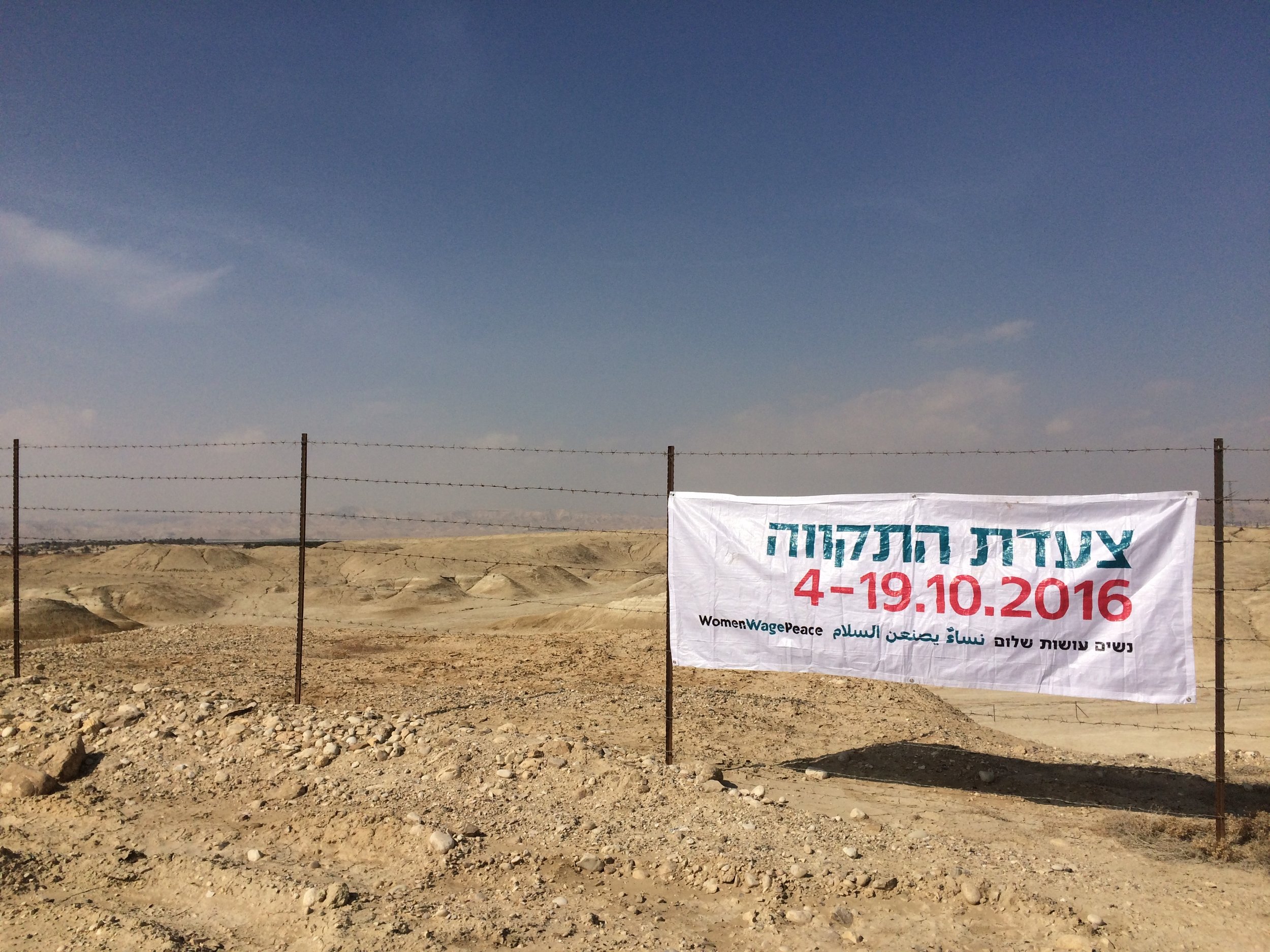
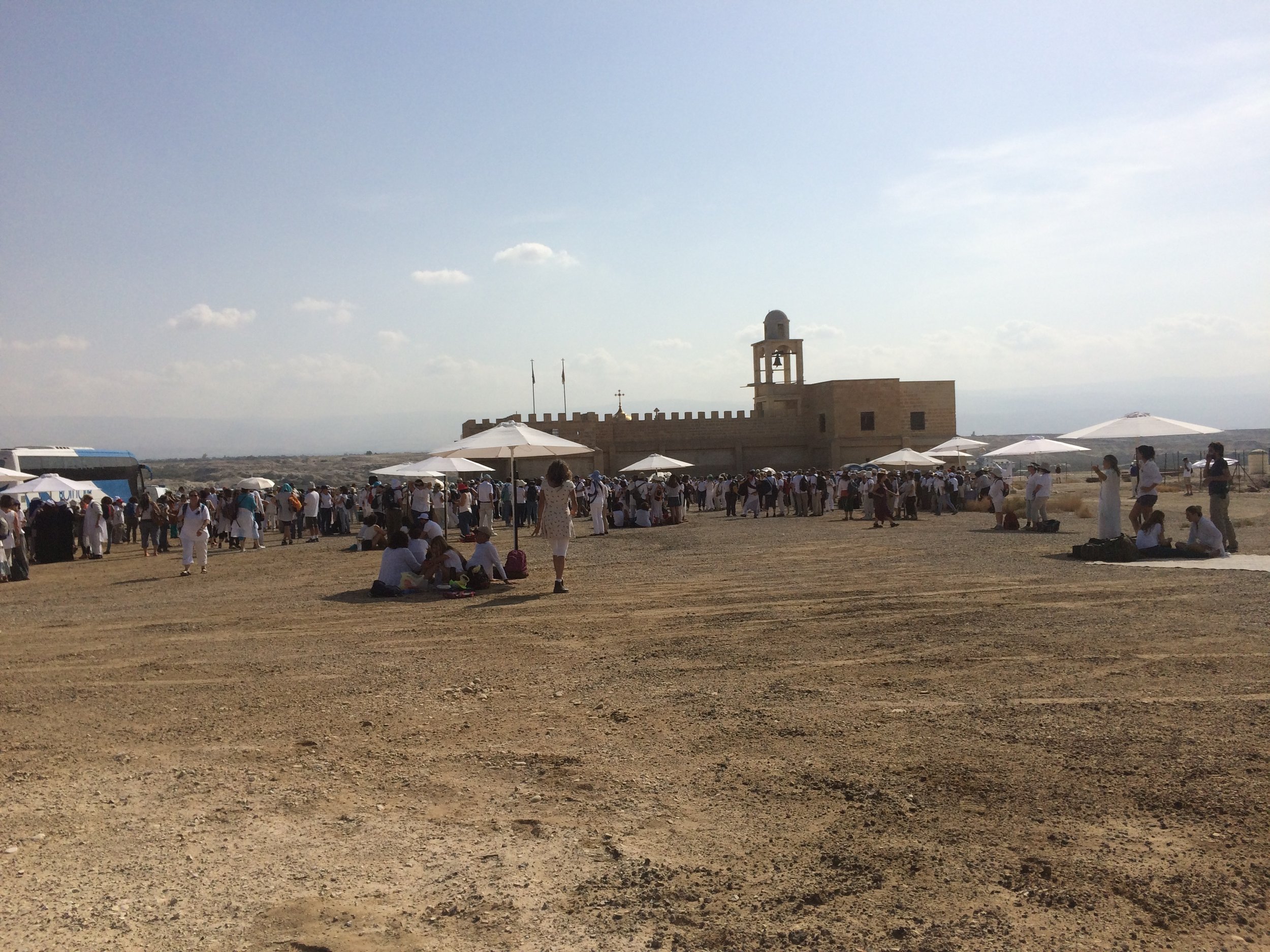

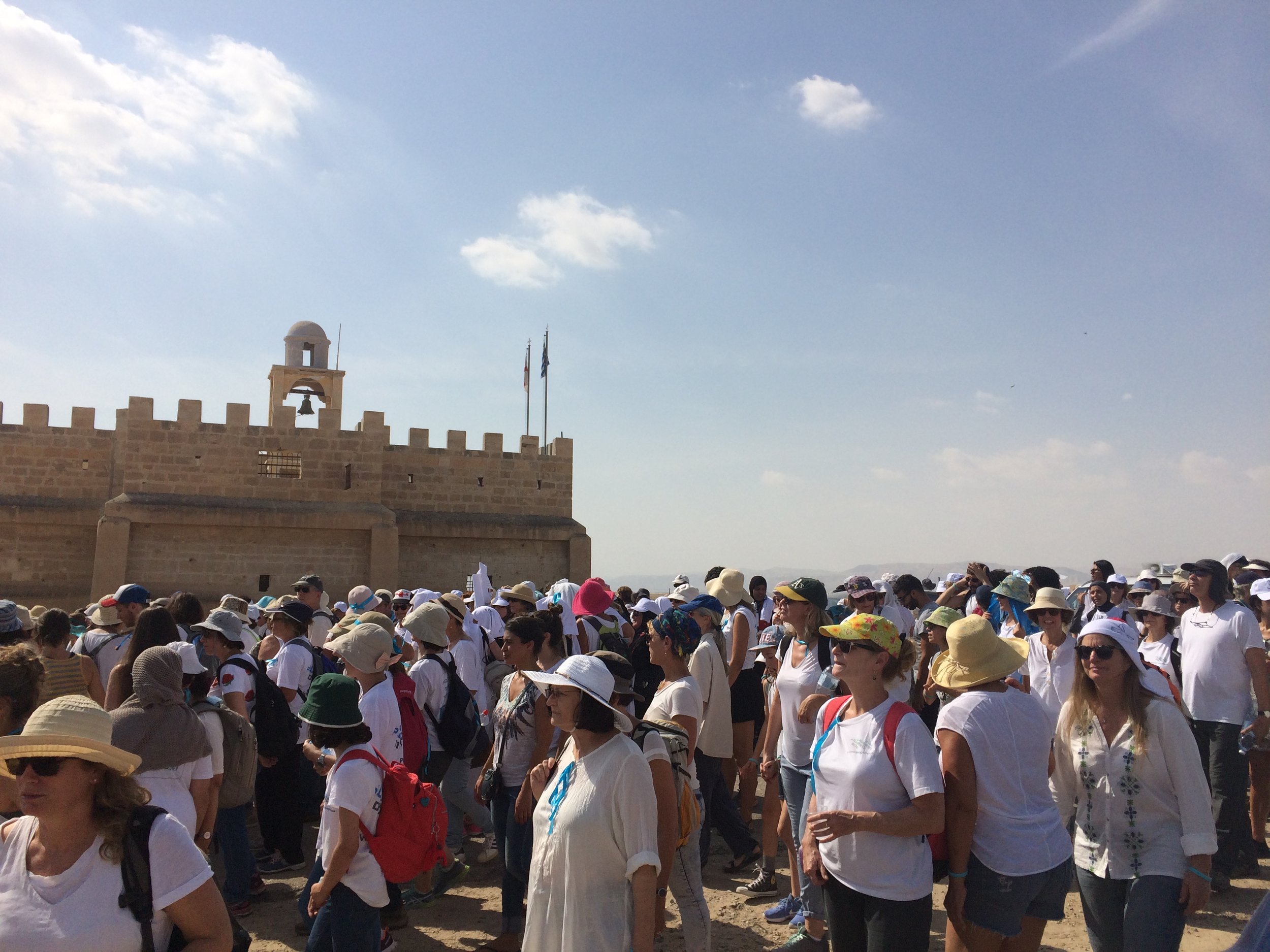
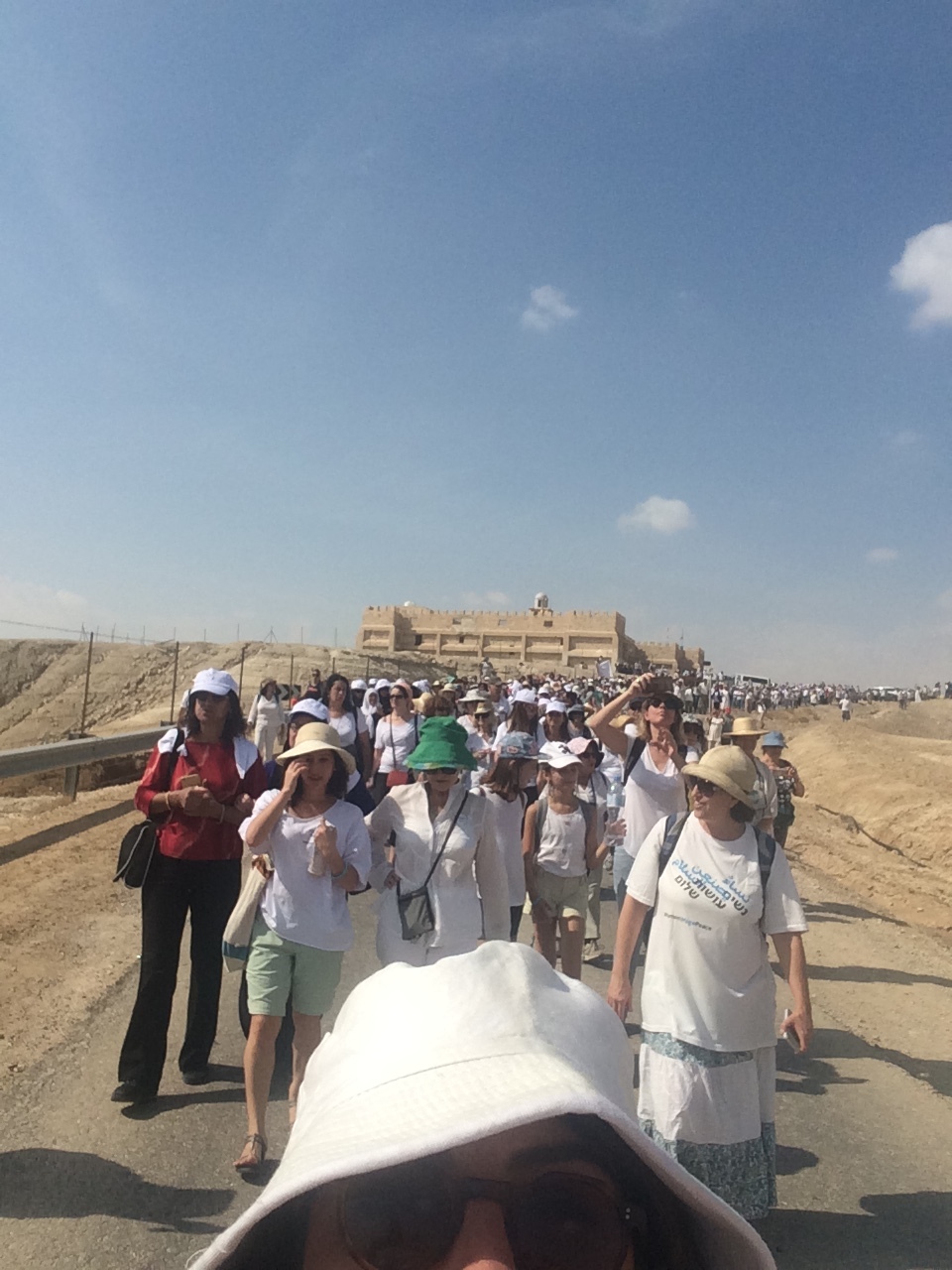
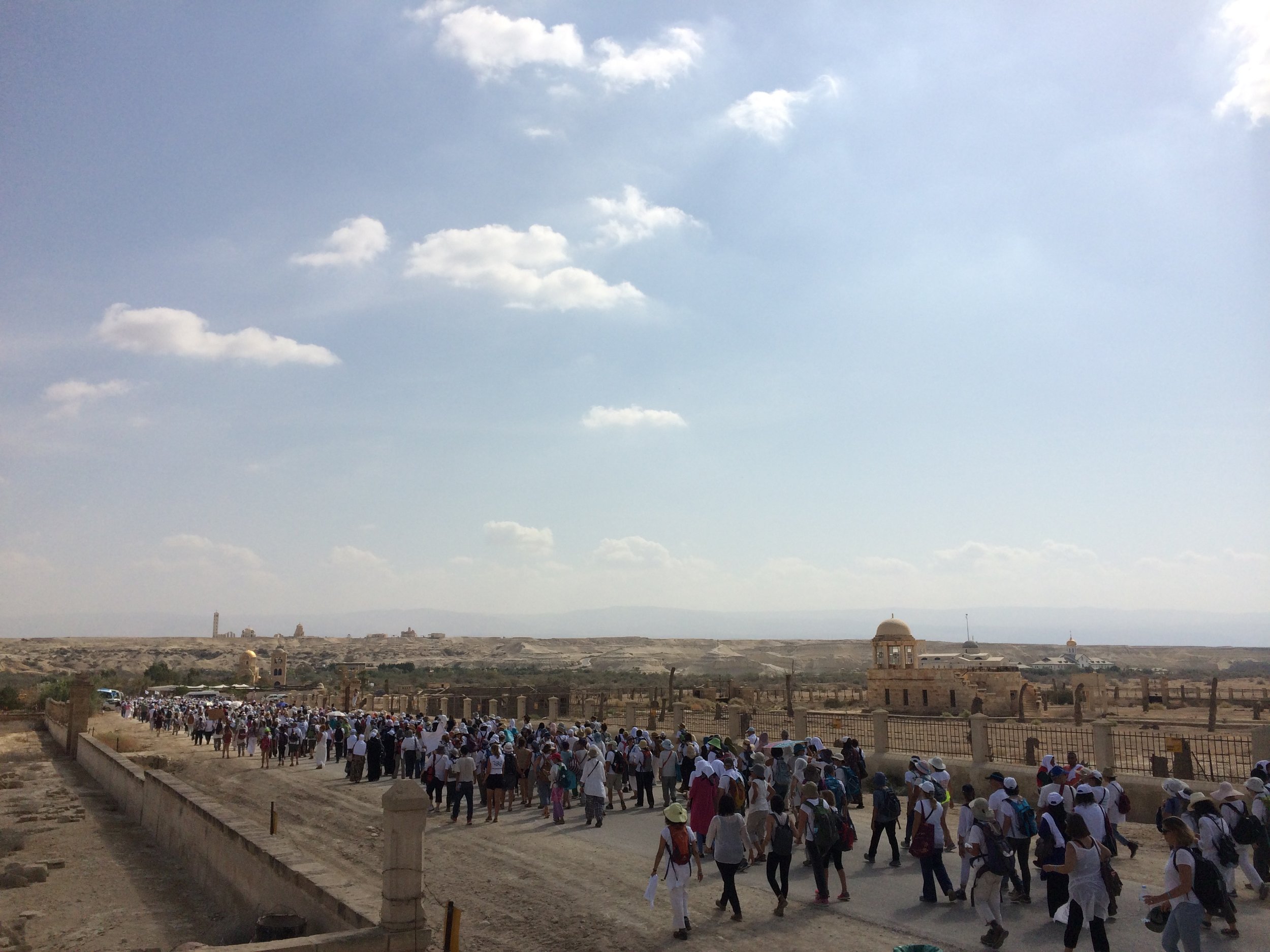
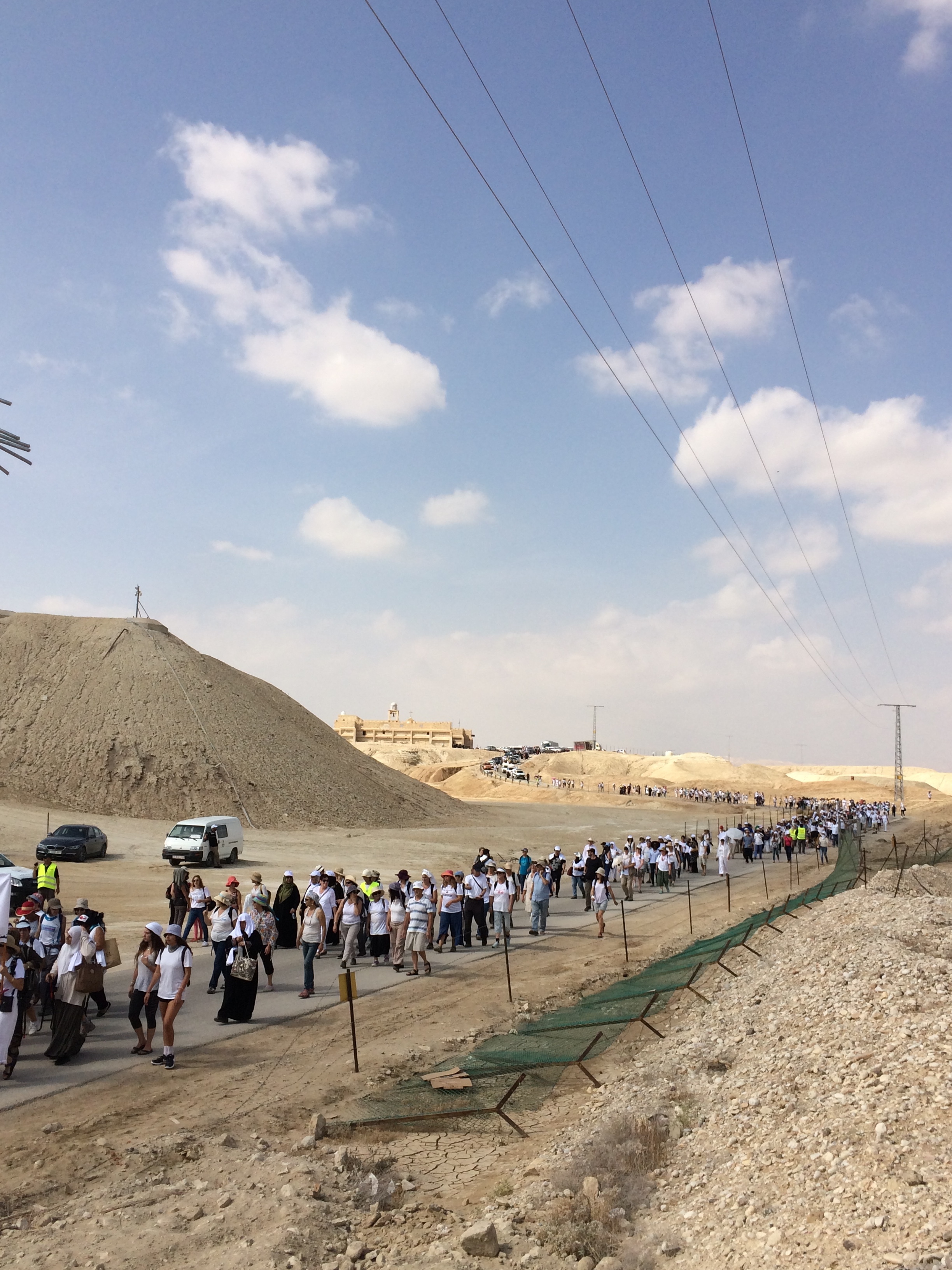
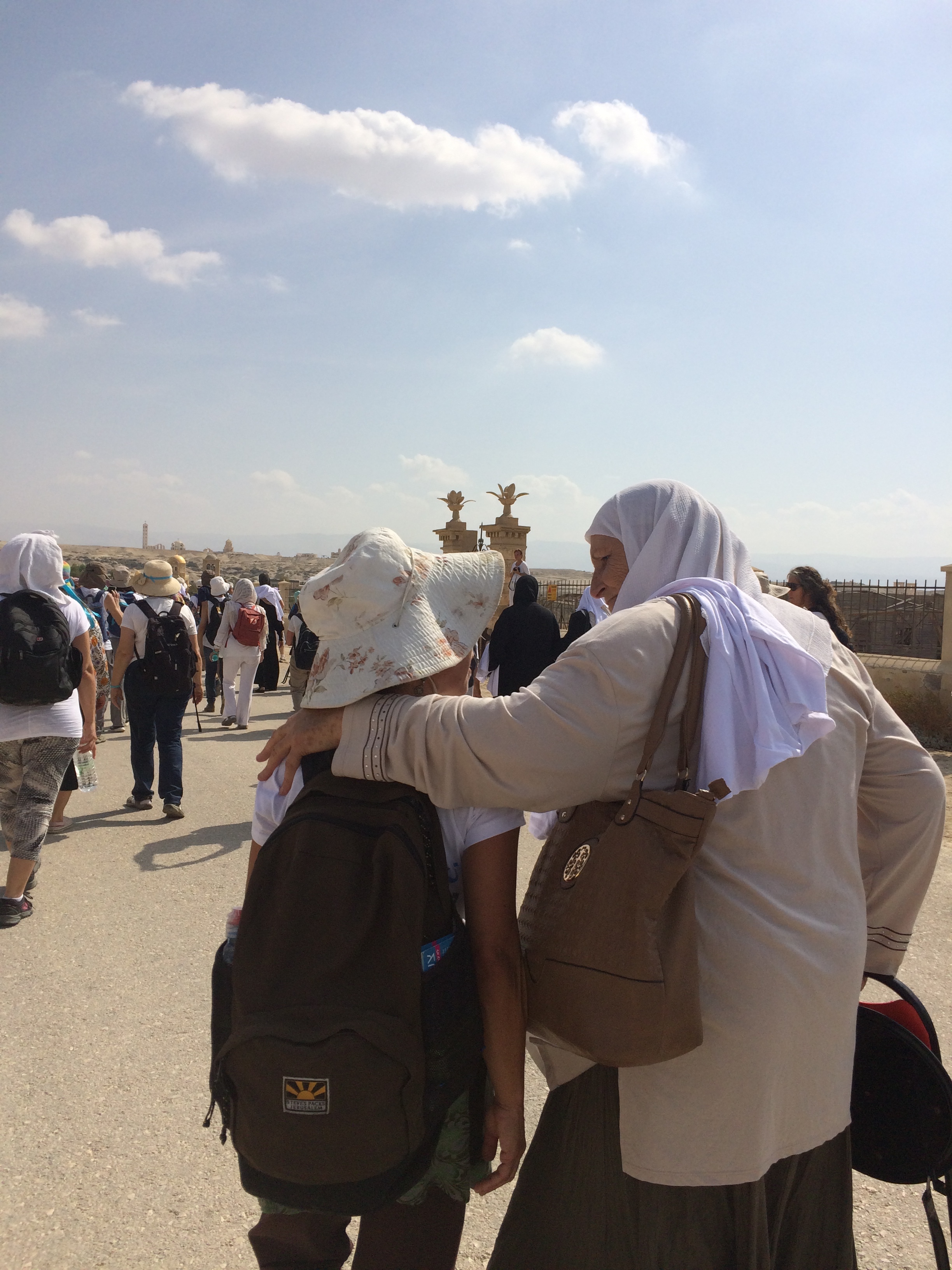
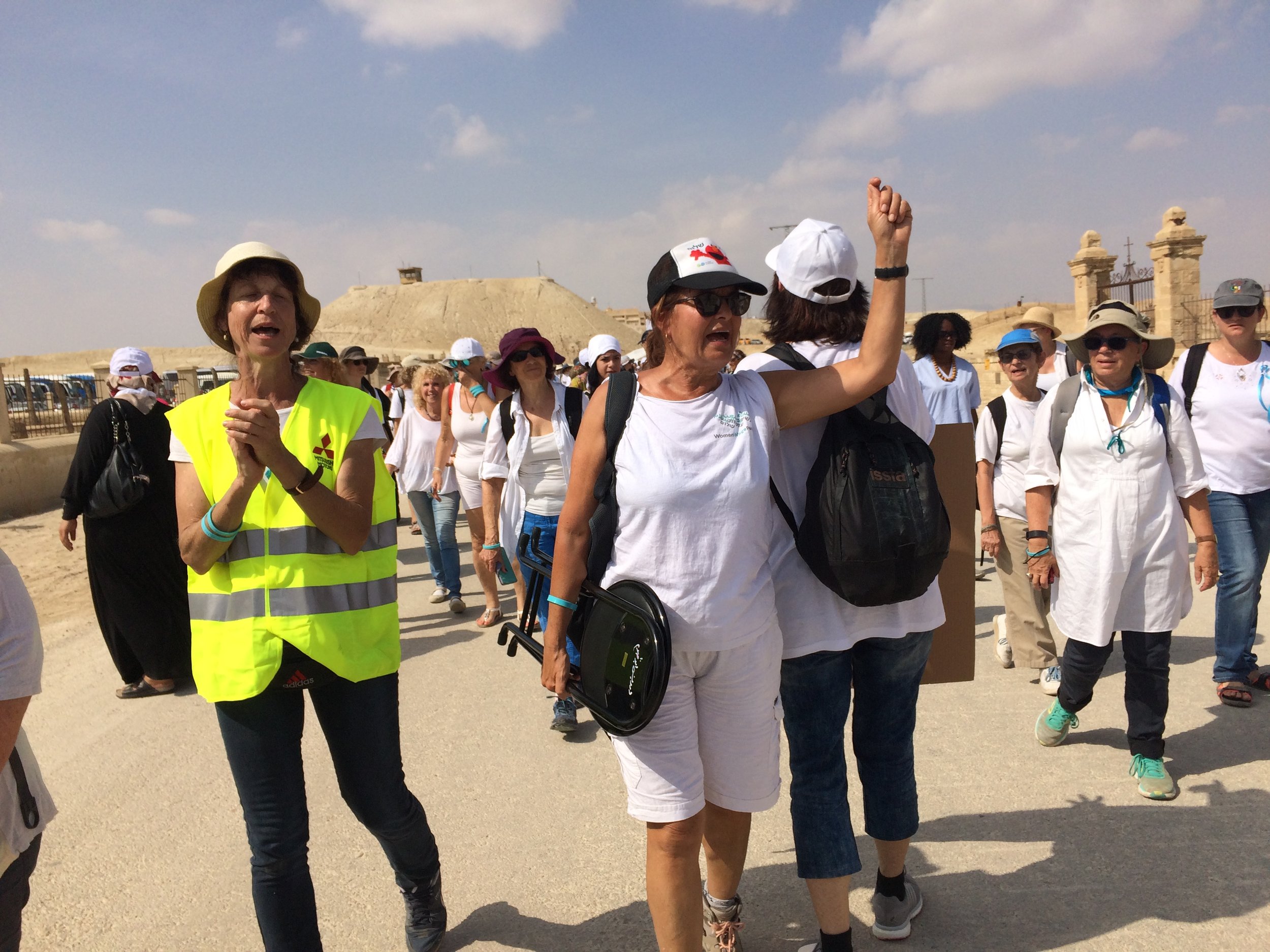
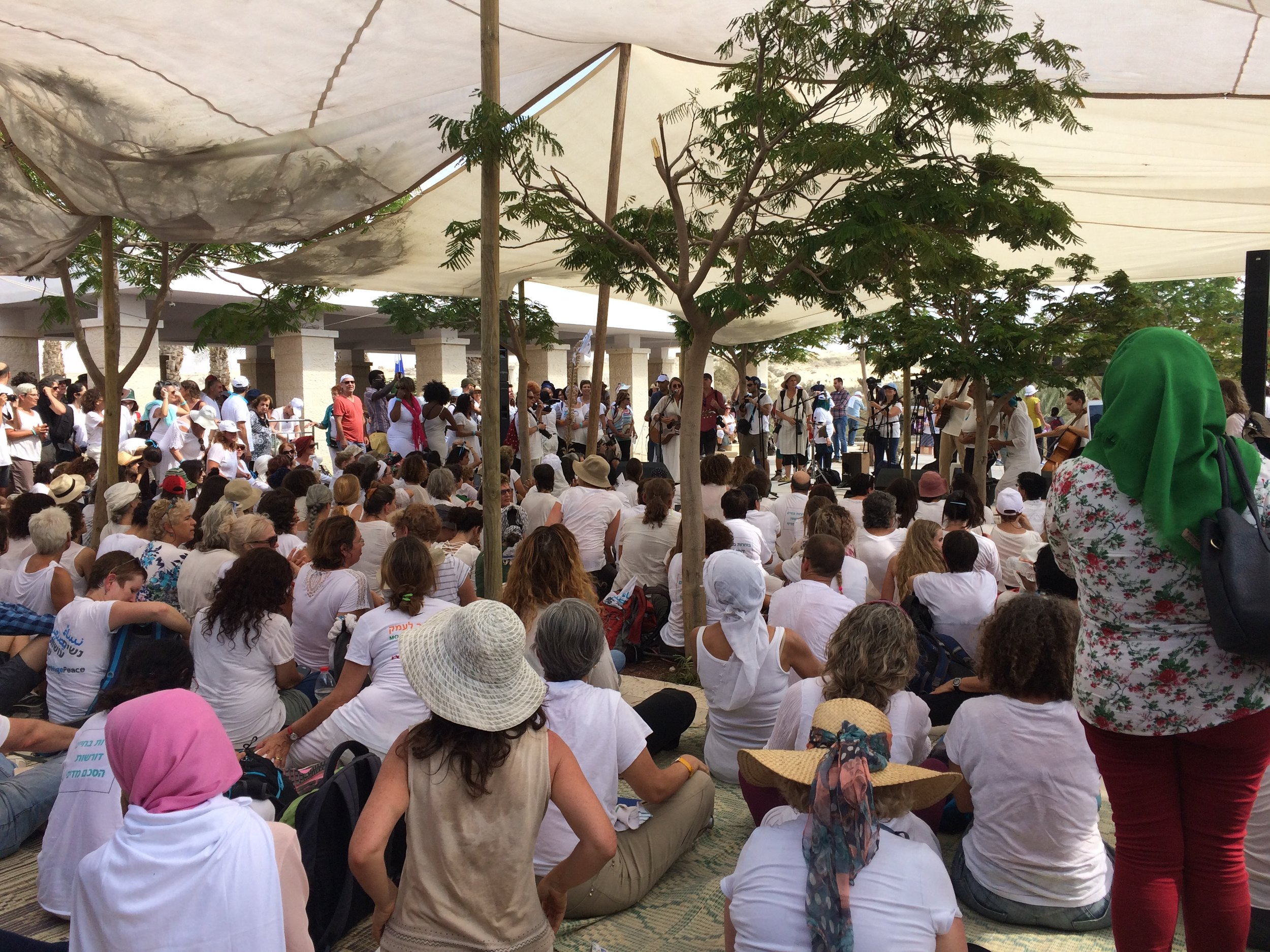

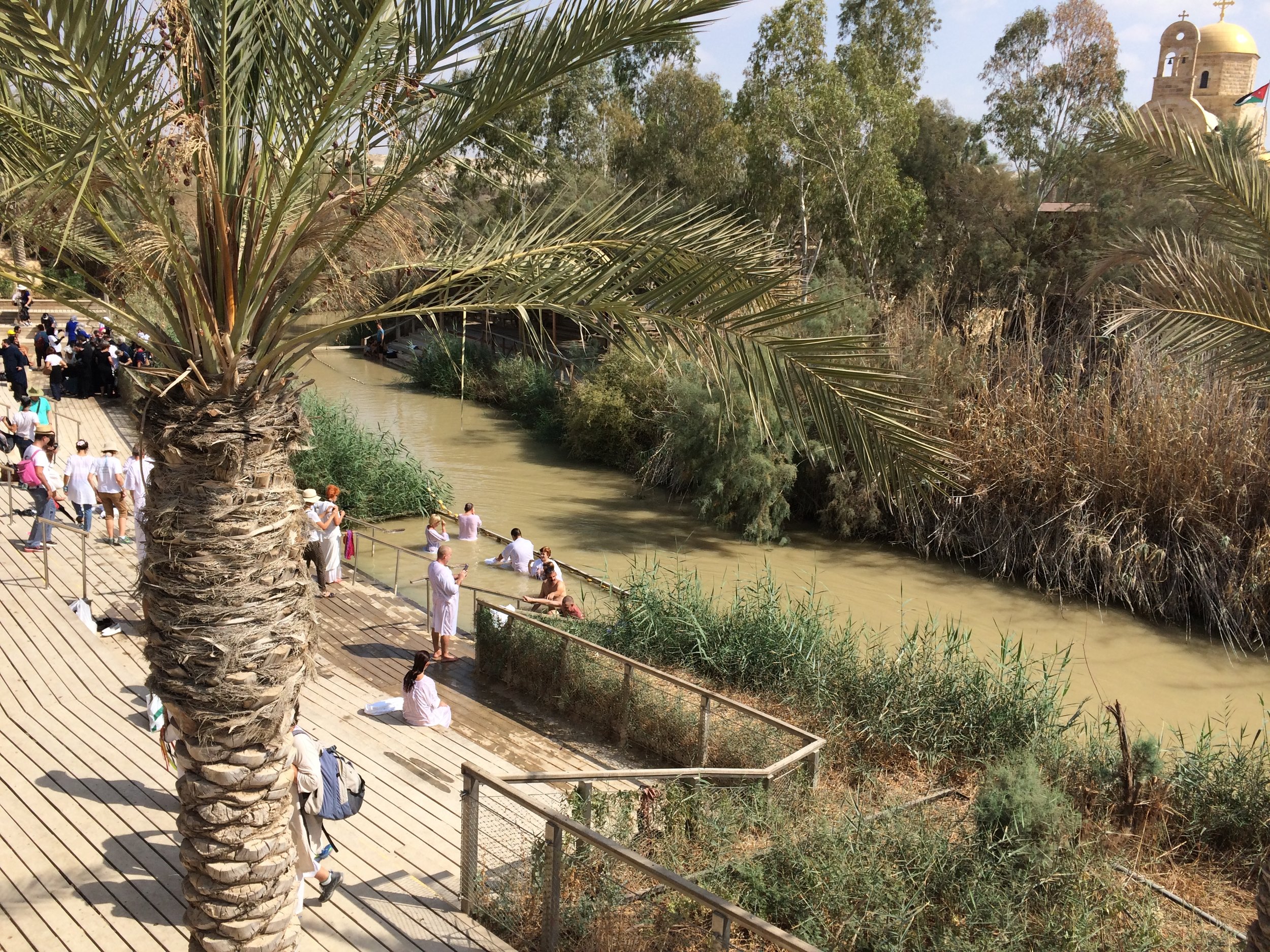
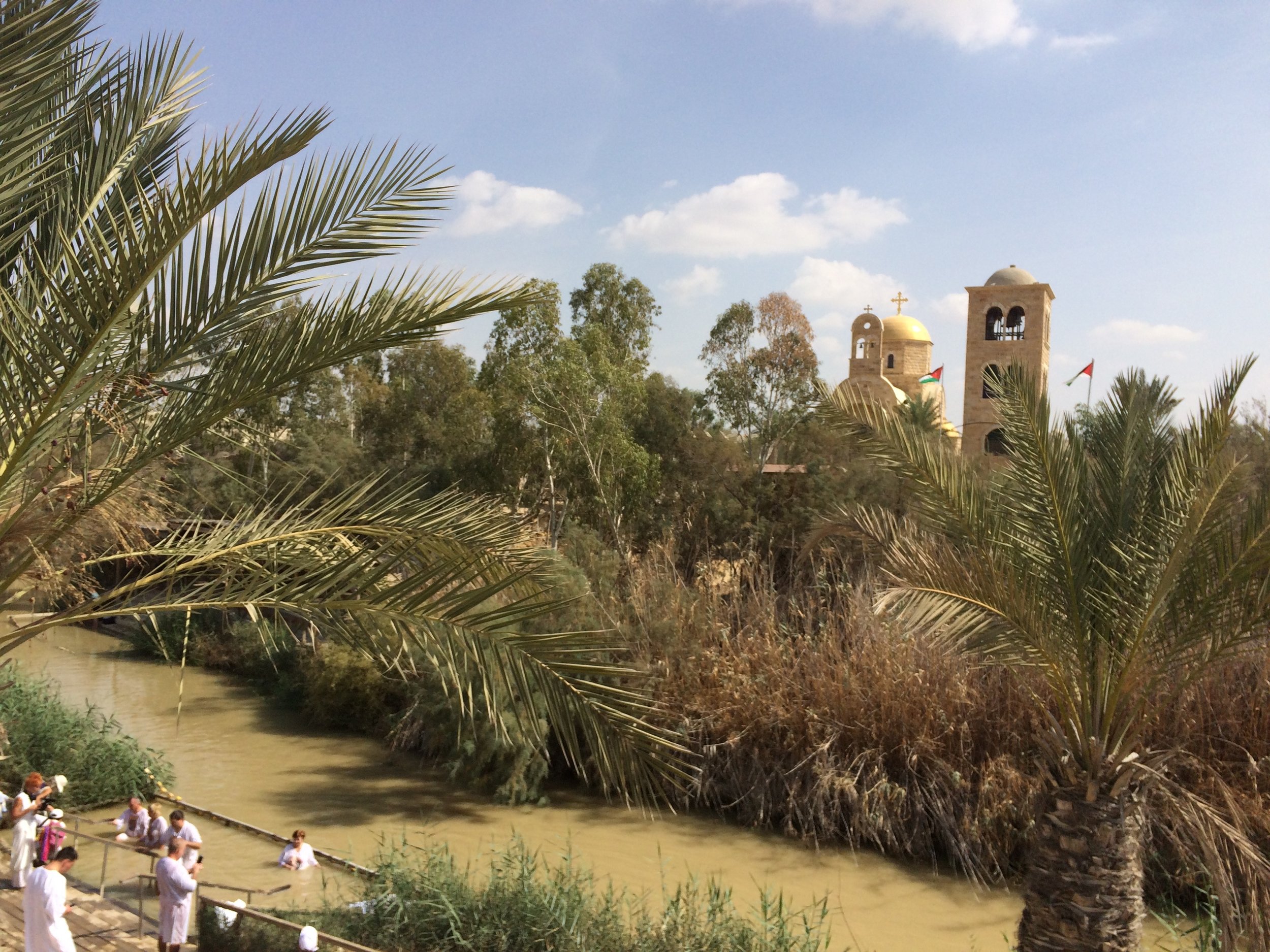

The event was a loud declaration that there are women from both sides who are willing to meet, to march, to stand together, and to find a solution. Leymah Gbowee spoke, the air was vibrating listening to her. Here stood someone who had accomplished the unimaginable, and here she was telling this crowd that they too could restore justice to their children's futures.
We boarded the buses yet again, and took off for Jerusalem riding on waves of hope.
***
The march was remarkable. We began next to the Supreme Court, we walked past and waved to the Knesset, we walked and as far as the eye could see, there was a wave of white shirts and placards reading “Demanding a Political Solution.” At one point, as we stood at the top of a hill looking back at the crowd behind, I could see no end in sight. Women around me held tambourines, banged on drums, began chanting, created a new chant to the tune of “The Saints Come Marching” where they repeated over and over again “Women Wage Peace.”
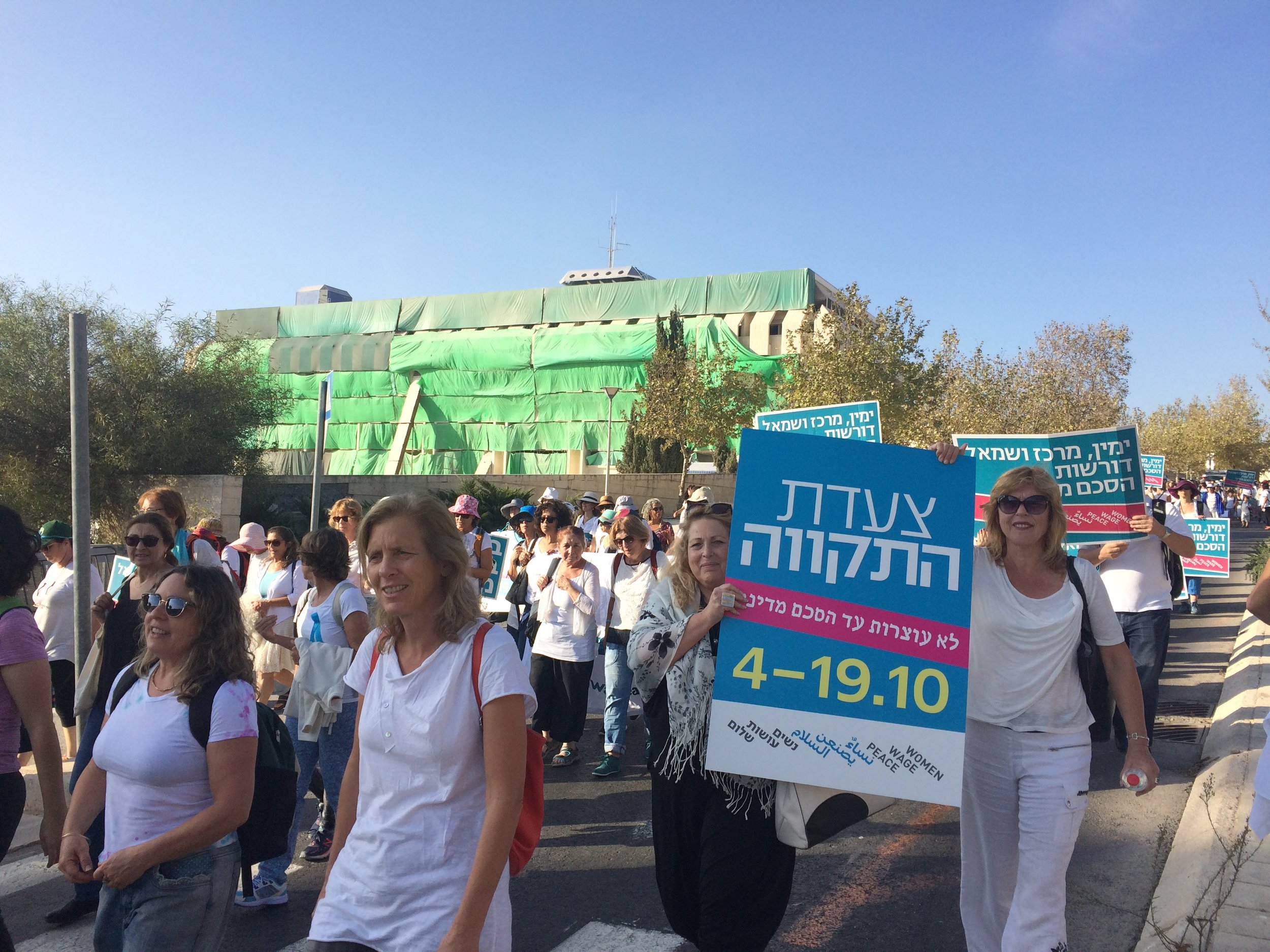


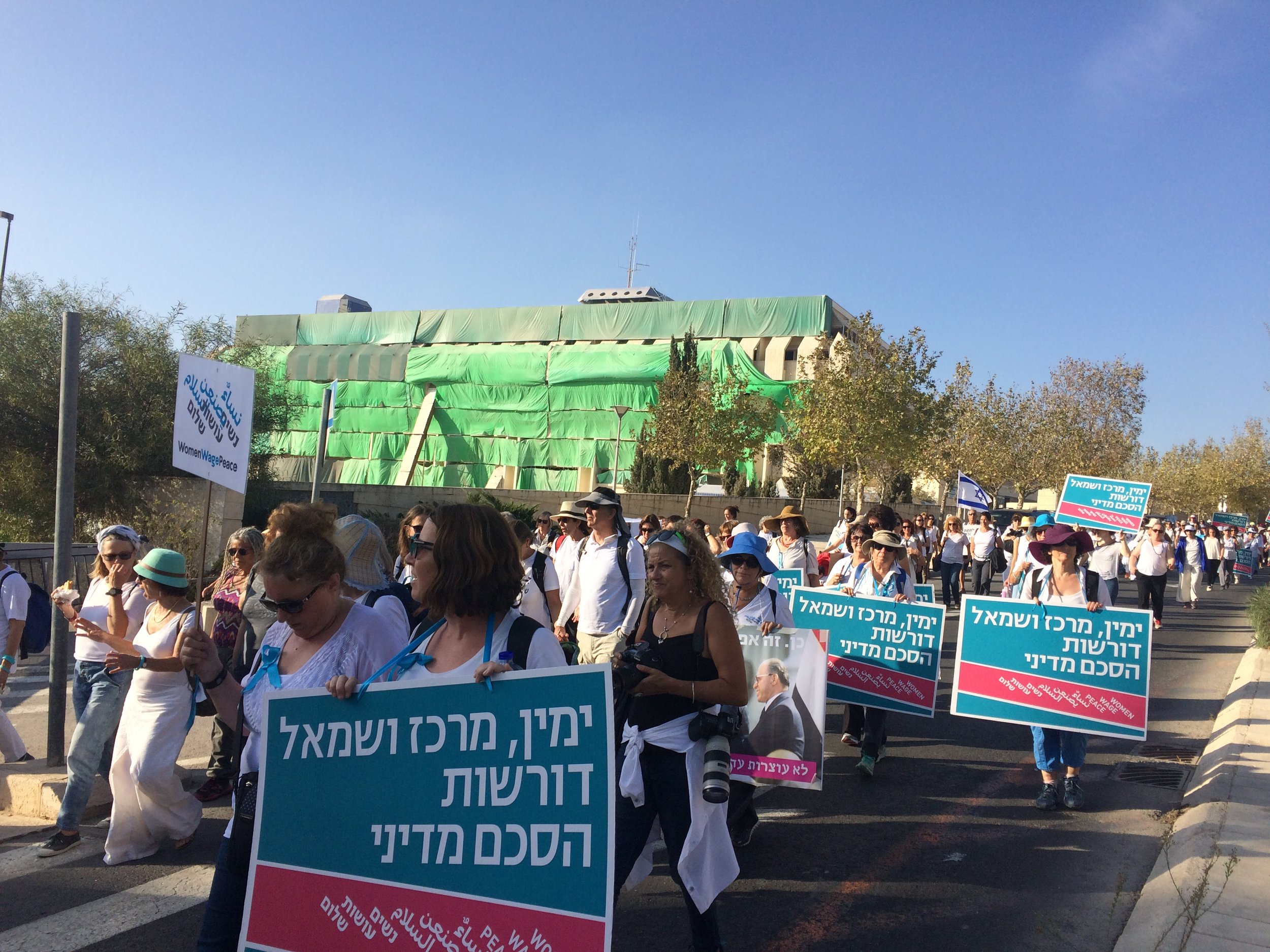

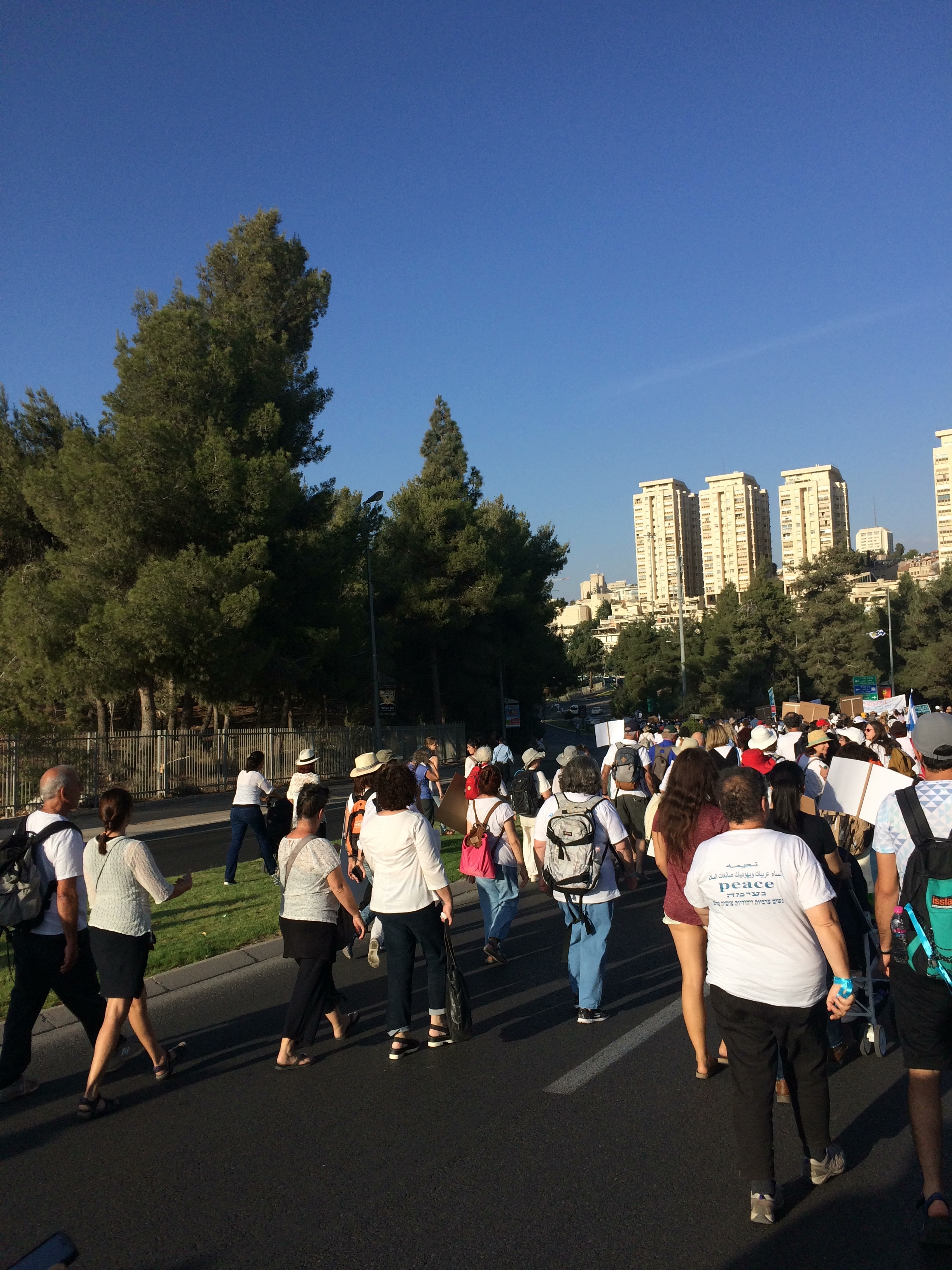
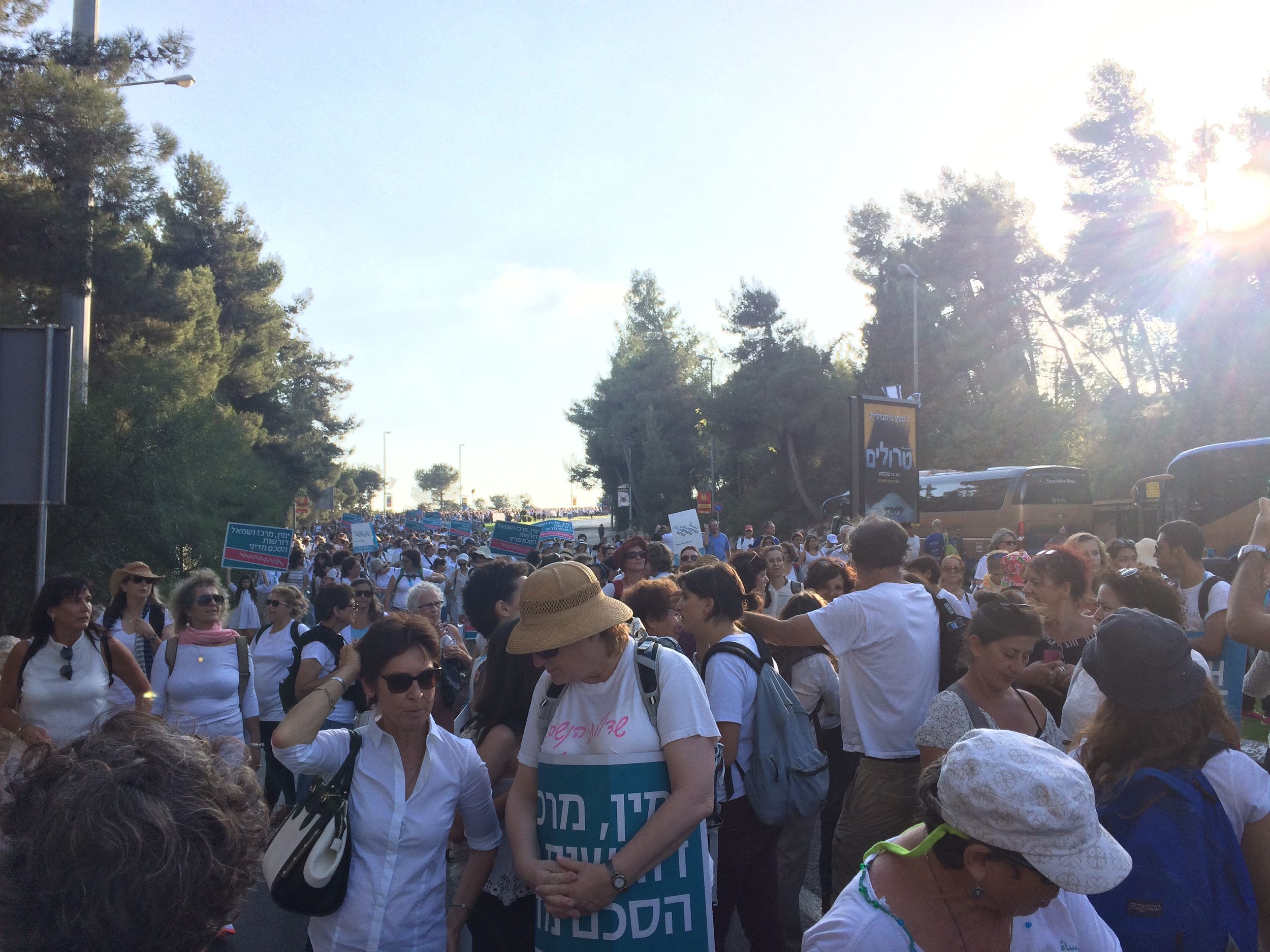

The night was remarkable: the march ended at the street in front of Prime Minister Benjamin Netanyahu’s residence and speaker after speaker built up on the energy of the crowd.
Two women who had marched the entire distance from the North spoke: one Jewish Israeli, one Palestinian Israeli. The Palestinian woman began in Arabic, and then remarked on what a powerful feeling that was to be able to speak in her own language here with this crowd.
Hadassah Fruman, the widow of Rabbi Fruman, spoke alongside her daughter-in law Michal Fruman. The two live in the religious settlement of Tekoa and called on women to join the movement and push for peace and justice in the region. The symbolism of their speeches was clear: Michal Fruman was wounded while pregnant in a stabbing attack in 2015, and as she spoke, Hadassa held the tiny baby girl who had been born after that. Michal was the only one on the stage to say the word occupation.
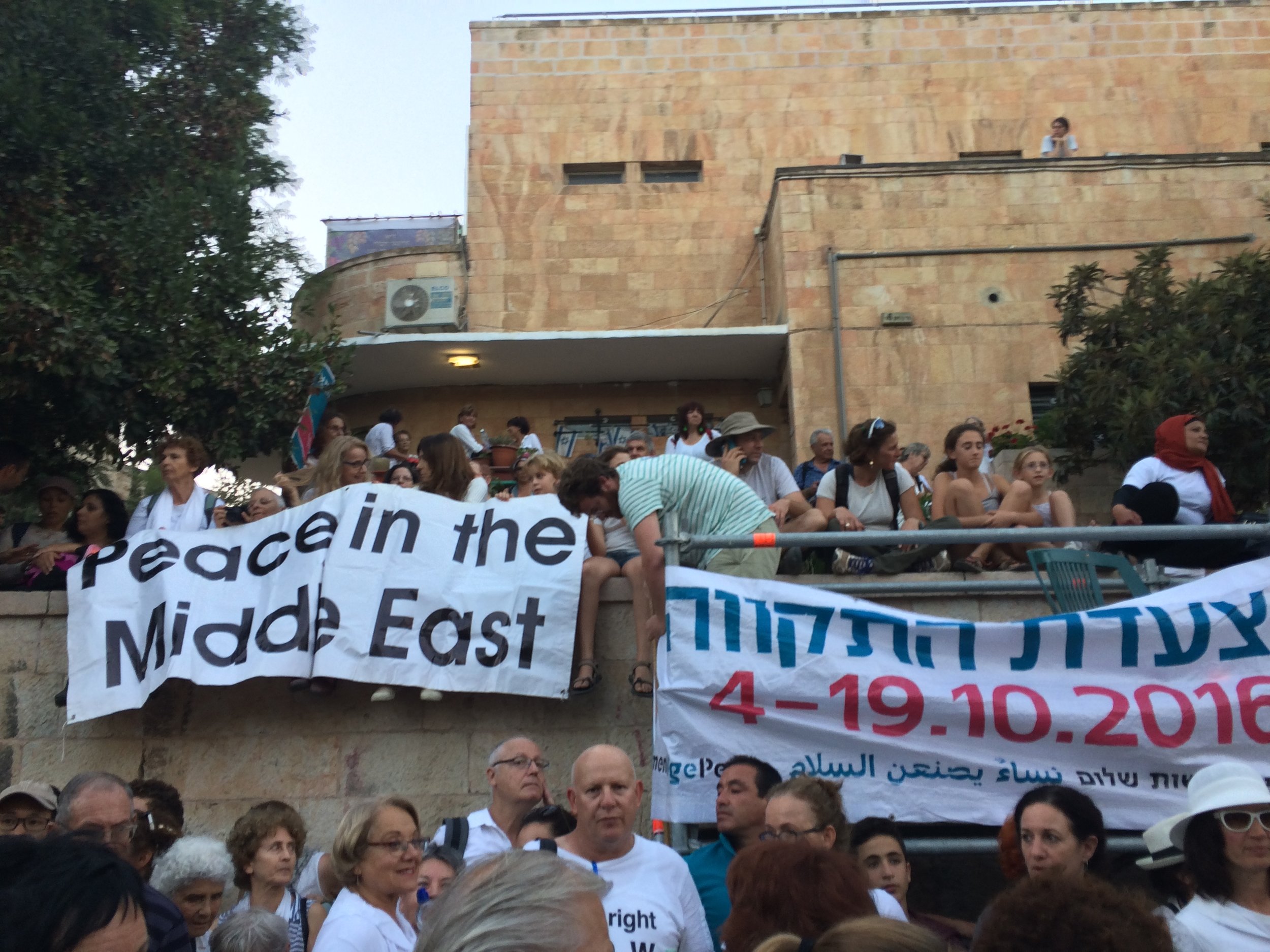
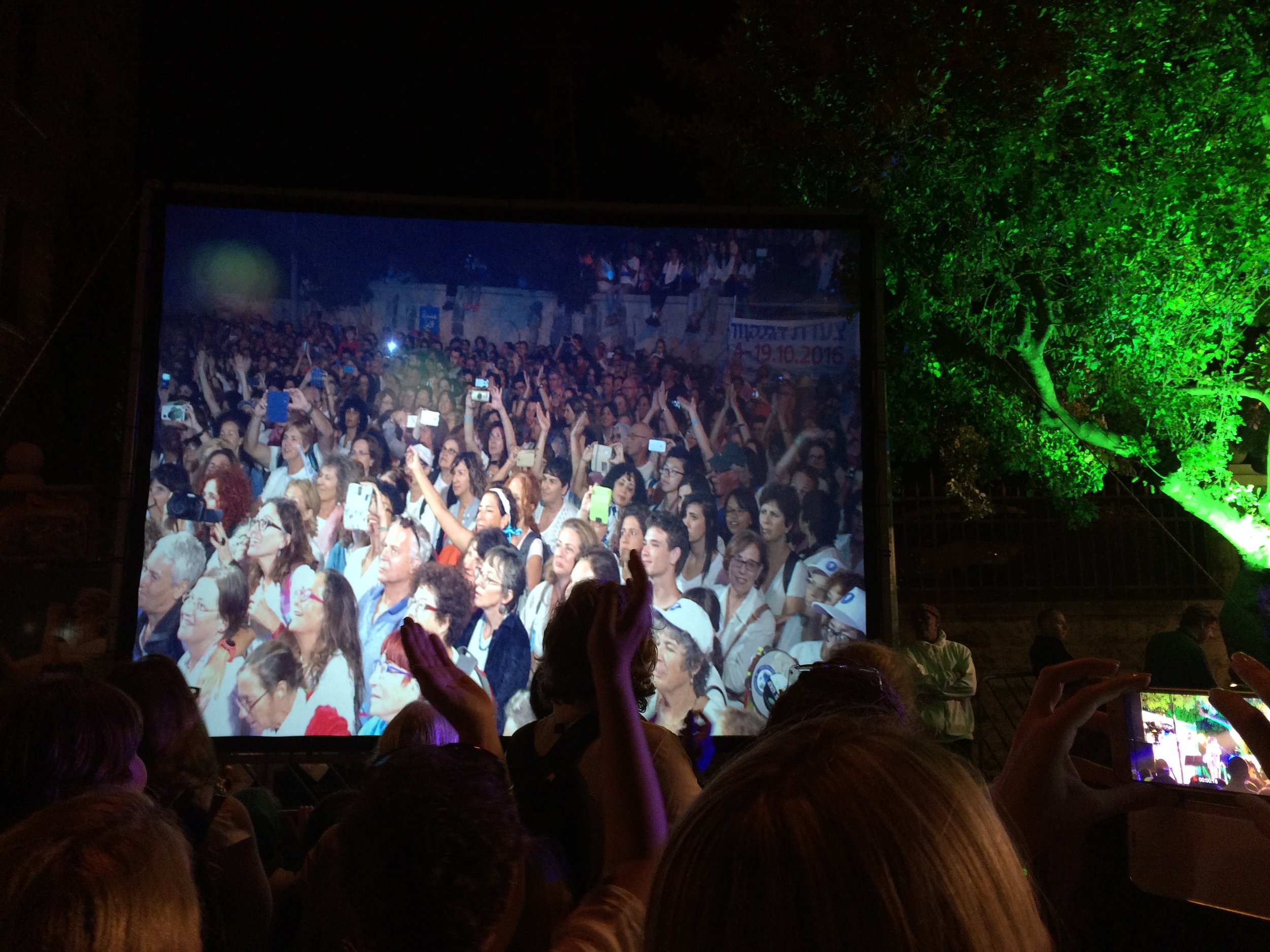
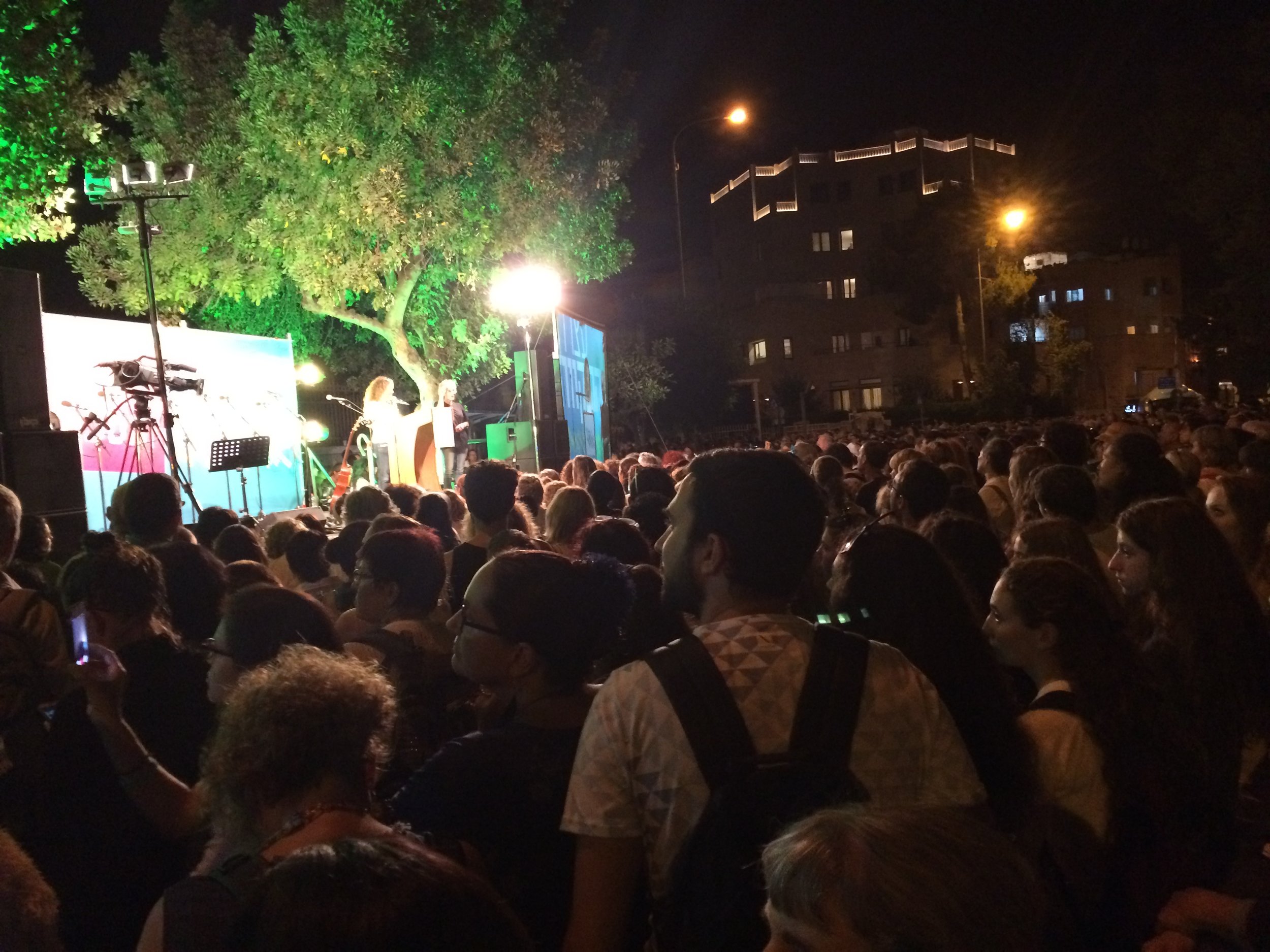
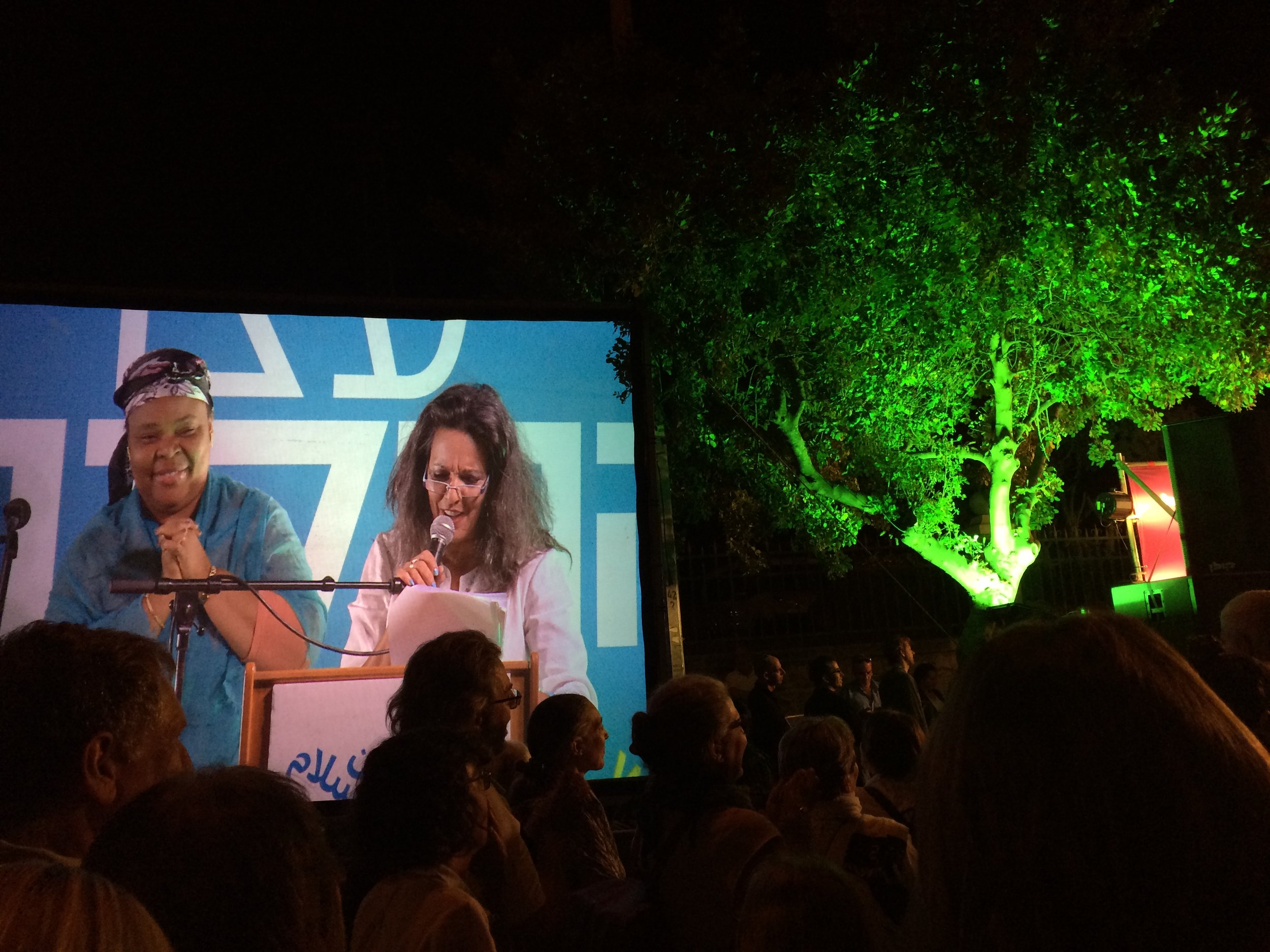
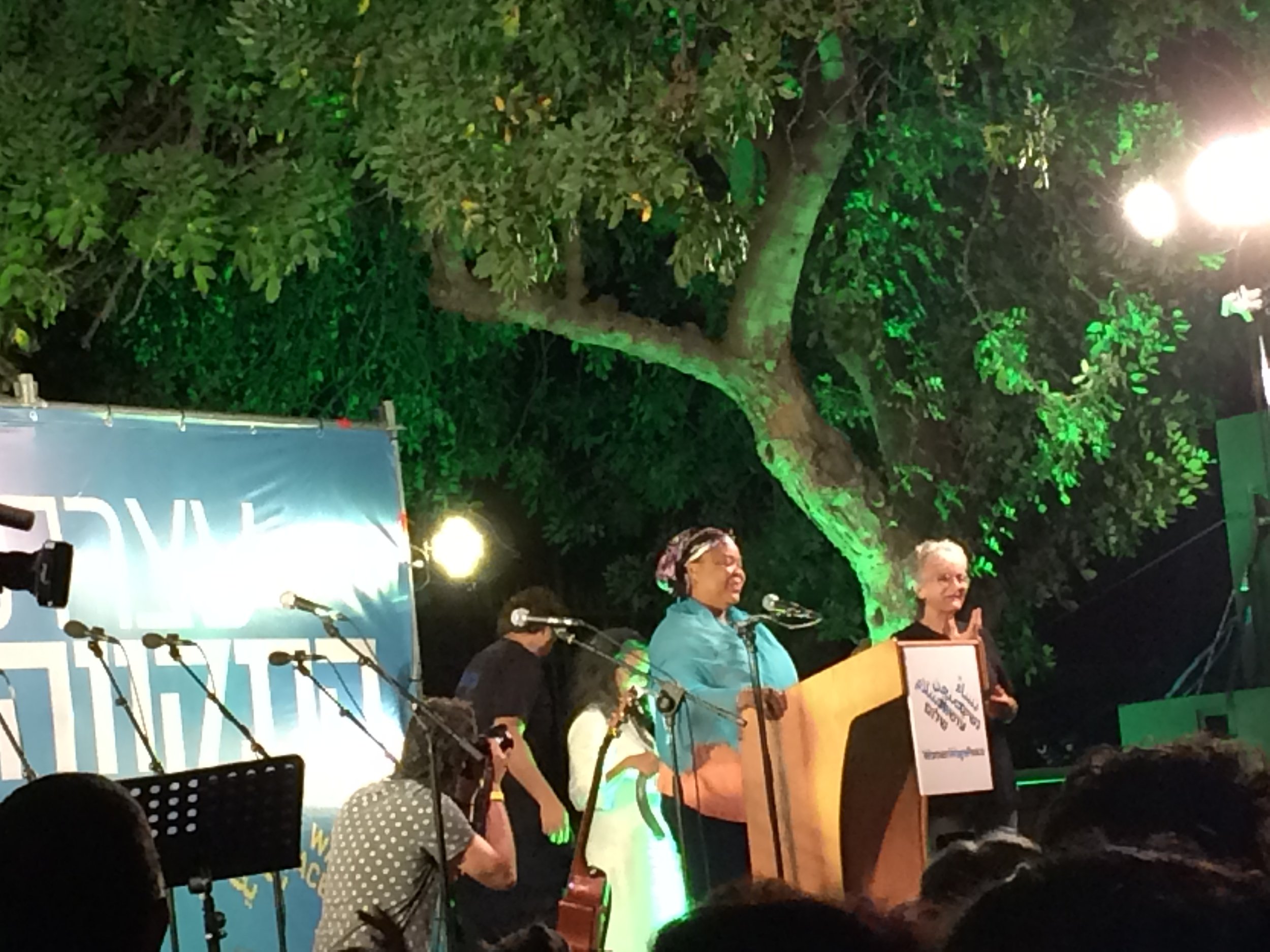
The Palestinian-Israeli mayor of Sakhnin spoke in tandem with the Jewish-Israeli mayor of the Eshkol region in the South.
Huda Abuarquob, Palestinian regional director of ALLMEP (Alliance for Middle Eastern Peace), spoke with conviction and pride and said loud and clear to the crowd that it is time to put to rest the myth that there is no partner for peace. She emphasized that while this day was big, the real work starts tomorrow.
Leymah Gbowee returned to the forefront and with a strong voice that echoed against the walls of the Prime Minister’s house, she shared her experiences in Liberia and commended the women of Israel for saying that enough is enough and demanding that their leaders be held accountable for earnest peace negotiations. She raised her hands high and told the women sitting enraptured, “Today, you are making history.” She commanded the crowd with grace, integrity, and kindness. She called up her experience that morning, dancing and marching with Palestinian and Israeli women and spoke to the crowd in Jerusalem, “You definitely have partners for peace.” She emboldened the women by sharing her own early cynicism of the power that women could change the reality in Liberia, and shared how her experiences disproved that cynicism. She emphasized again and again that women do have power to make change:
“My sisters in Israel, this is your time. This is the moment that the spotlight it on you. It is your time to stand up for peace, it is your time to stand up for justice, it is your time to stand up for freedom, it is your time to stand up for equality. It is your time to say no to war and yes to peace.”
Their work is not over. Since the march, the women are still sitting in a Suka in front of the Prime Minister’s house. They will march on October 31st to the Knesset to be there for the opening session and they have planned shifts of women to be present inside and outside of the Knesset during the upcoming winter session to put negotiations on the political agenda again. While the winter cold is starting to creep in, hope is keeping me warm.


